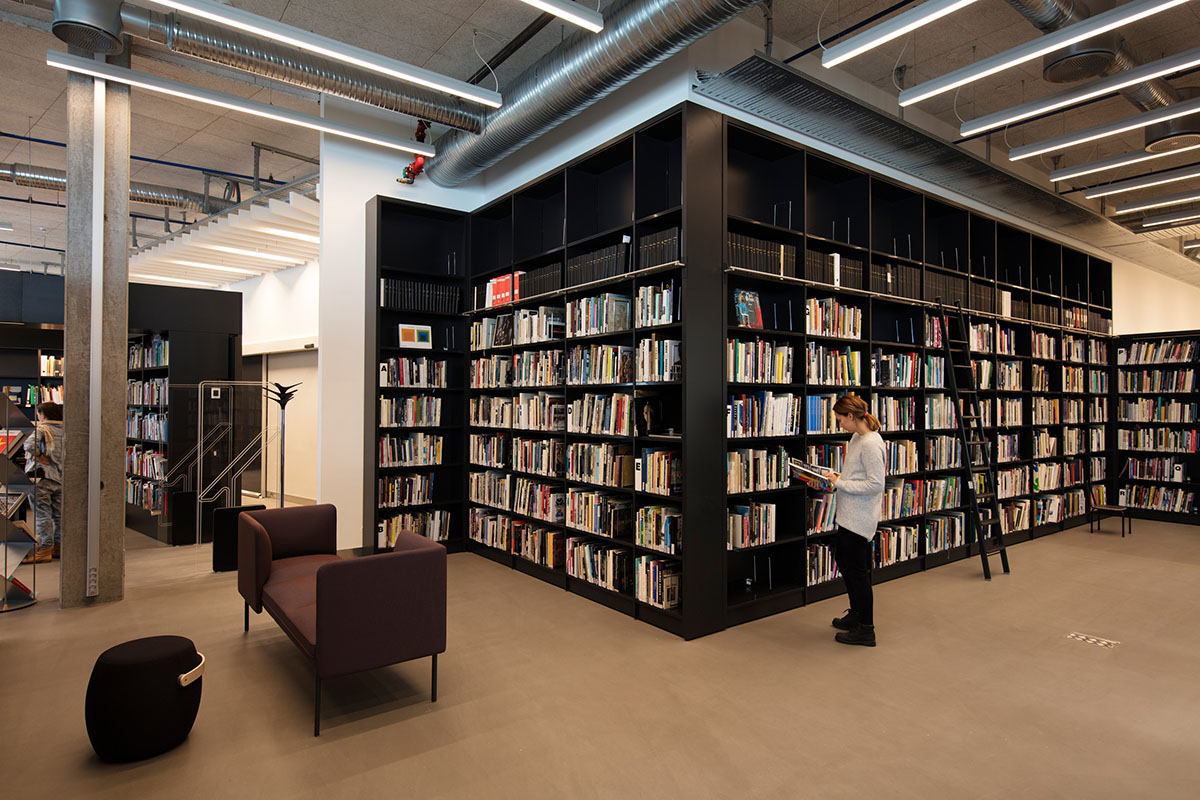Submitted by WA Contents
Snøhetta completes new Art School creating metallic effect in the city of Bergen
Norway Architecture News - Oct 18, 2017 - 16:16 15975 views

Norwegian architecture firm Snøhetta has completed the new Faculty of Fine Art, Music and Design (KMD) of the University of Bergen, creating a metallic effect with light and shadow play and distinctive texture, materiality. Officially opened on October 11, the robust and interactive building gathers KMD’s 350 art and design students under one roof, while simultaneously connecting the faculty and the city of Bergen.
The studio replaced the former Bergen Academy of Art & Design (KHiB), the new KMD has undergone a historic fusion, assembling the previously scattered faculty buildings under one roof.

This new 14,800-square-metre cross-disciplinary faculty is now the second largest cultural building in Bergen after the 1,500-seat Grieg Concert Hall. The building is organized along two axes, one internal, dedicated to students and staff, and one external, open to the public.
Under the KMD roof, these axes cross each other in the 1,300 square meters and 19,000 square meters project hall, one of the most prominent and dominant features of the building.

Snøhetta created a transition zone between the public and the private sphere of the school, which the building offers exciting opportunities for students, professors, and visitors to connect, discover, and learn from one another. It is a multi-use, semi-climatic space running through the entire construction.
The building’s entrance is connected to the large outdoor public plaza, Kunstallmenningen. The plaza, together with the large glass wall of the project hall, makes KMD an inviting and open building in dialogue with the city center of Bergen.

The texture and materiality is comprised of clean-cut, environmentally friendly and durable materials throughout the building - all materials were selected according to the rainy climate of the Norwegian west coast and a high degree of rough use, wear, and tear.
The material palette has a clear reference to the Norwegian coast, using well-established materials such as pine wood block flooring, birch veneer, raw aluminum, crude steel, and concrete.

"The interior palette is kept low key, providing studios, student work areas, and other spaces with a neutral and durable environment suitable for art and design work," said Snøhetta.
"Of the 11.45-acre Møllendal lot, a total of 9 acres are dedicated to outdoor areas, including green areas, open plazas, and parking. Large parts of the outdoor is accessible to the public, with the Kunstallmenningen plaza and the café terrace as natural meeting points."

"The plaza is framed by two green wetland areas fed by roof and surface water, planted with wetland vegetation from the Norwegian flora. Here, one will find a rich variety of plants, such as sea buckthorn, willow, blackthorn, blackberry, ferns, globeflower, cat tail, and meadowsweet. Parts of an existing natural stone wall along the road Møllendalsvegen, echoing the former location of the Munck Crane’s factory, has been retained," added the studio.

Behind the building students and visitors will find courtyards for outdoor work and a delivery zone. The yards lead into workshops which have been equipped with outdoor workstations on the roof. These terraced workstations lead out into the surrounding terrain with its scattered, rugged vegetation
Snøhetta has created a generous and functional building, serving both students and faculty members with its top-notch machinery, equipment and special facilities. Surrounding the 52-meter-long and 24-meter-wide project hall one will find 32 huge workshop-cum-display spaces.

These spaces are equipped with specialized infrastructure and heavy machinery for woodwork, ceramics, metalwork, plaster, printmaking, textiles, 3D modelling and printing, video, sound art, and photography.
"While the creative work areas are designed to provide plain functionality, social and administrative spaces have been designed for people to work and relax together. Among other, the cantilevered box-shaped windows emerging from the façade may serve as social zones where students can come together over a coffee to discuss, relax, and enjoy the view during brakes," added the architects.

The studio used pre-fabricated raw aluminum elements that clad the building’s exterior compose a puzzle of depth, breadth and length. 900 varied sized seawater-durable crude aluminum elements are protruding from the wall at varying distances, only paused by large cantilevered box-shaped windows punctuating the rhythm of the aluminum surface. The metal cassettes shift according to the weather conditions of the west coast and reinforces the metallic effect of the aluminum.

Durability and robustness have been keywords for all decisions made throughout the façade design process. The rainy and sometimes stormy coastal climate demands all exterior materials to not only withstand harsh conditions, but to weather in a way that highlights their unique qualities over time. The crude aluminum surfaces will gradually age and naturally oxidize, heightening the variations in colors and textures.

"This robust and playful expression gives great flexibility when planning for windows and lighting conditions. The windows of the building are set at different heights to allow for maximum usable wall space and excellent daylight conditions," explained the studio.
"Moreover, the glass roof conveys light from the sky which melts together with the light streaming through the glass wall. The shadows in this space are somewhat erased, leaving the colors of the room authentic and natural."

Snøhetta recently completed Barr's interiors and visual identity for Noma Restaurant Group in its former Copenhagen home. The studio also unveiled plans for the transformation of a 150-year inaccessible industrial region of North America - Willamette Falls - to revive the area with new river walks and public spaces overlooking Oregon City's waterfront.
Snøhetta's another eagerly anticipated building King Abdulaziz Centre for World Culture, made of soft pebbles with clad in stainless steel tubes, is nearing completion in Dhahran, Saudi Arabia.
All images © Tomasz Majewski Photography
> via Snøhetta
